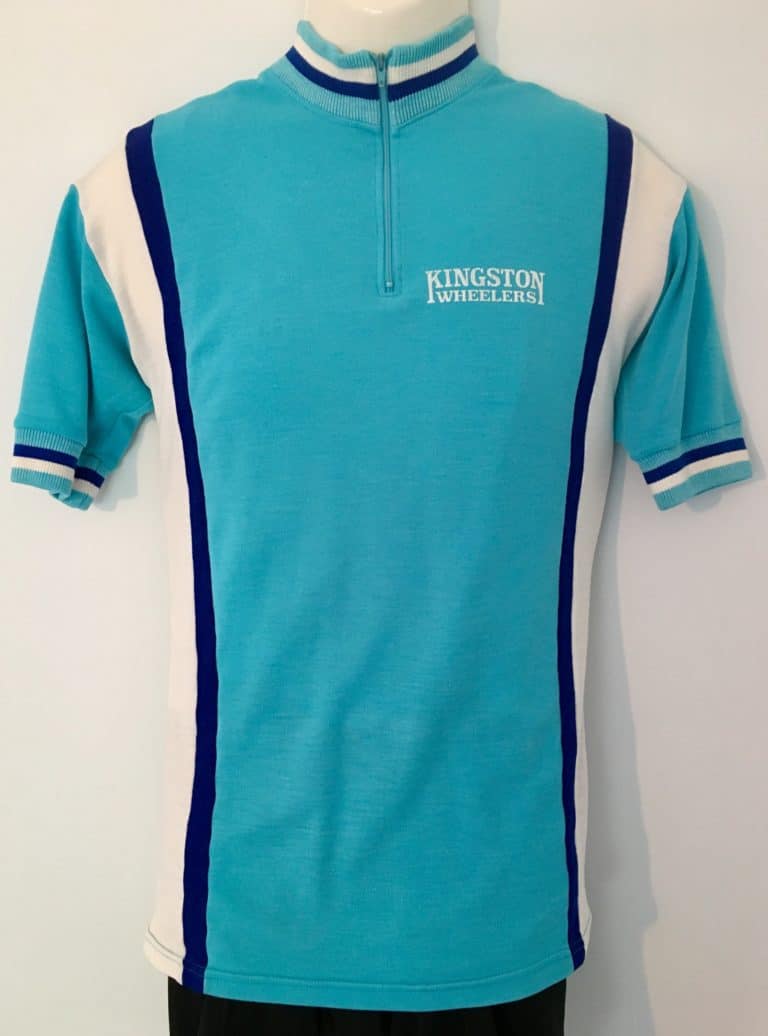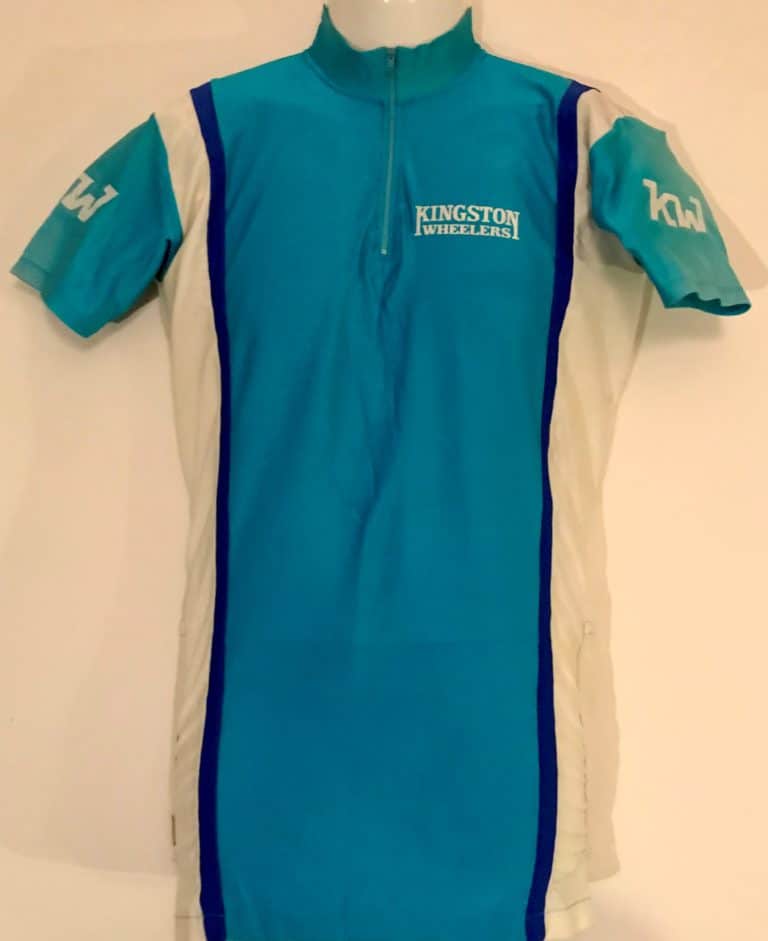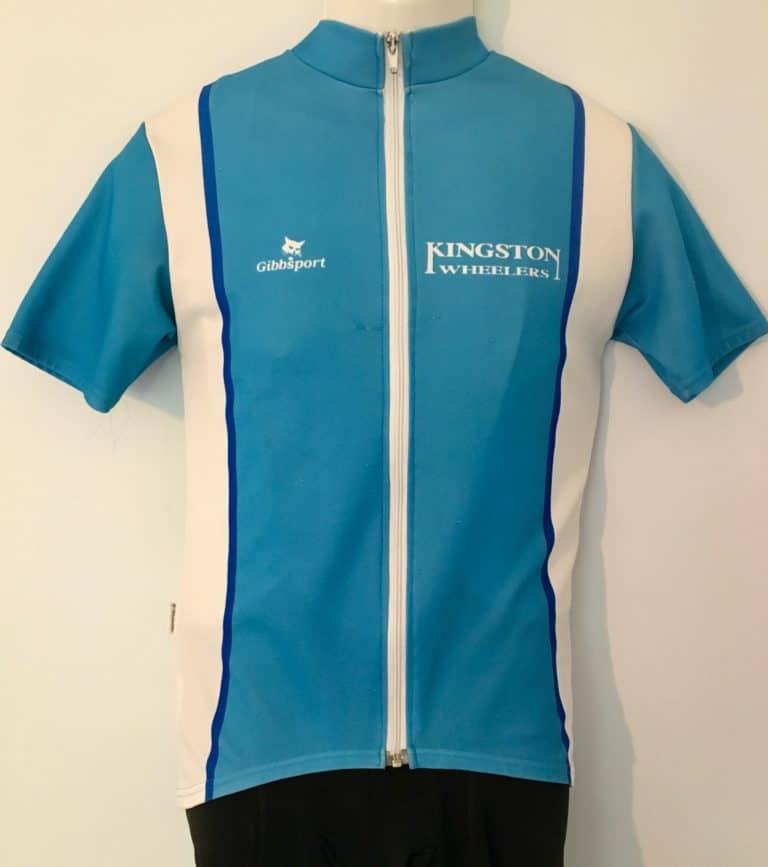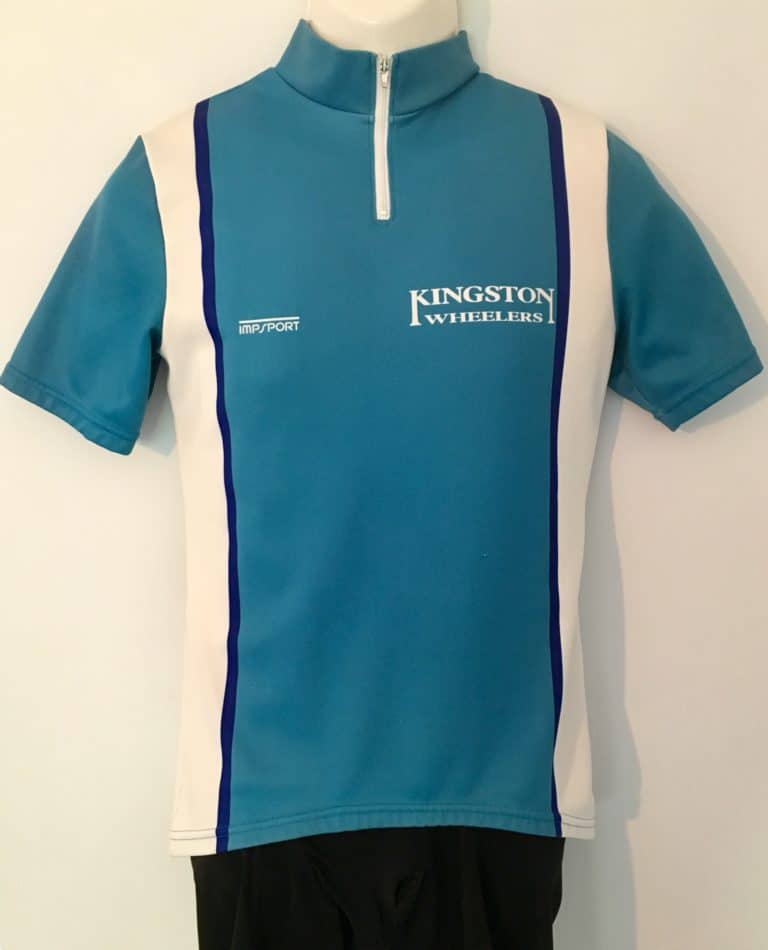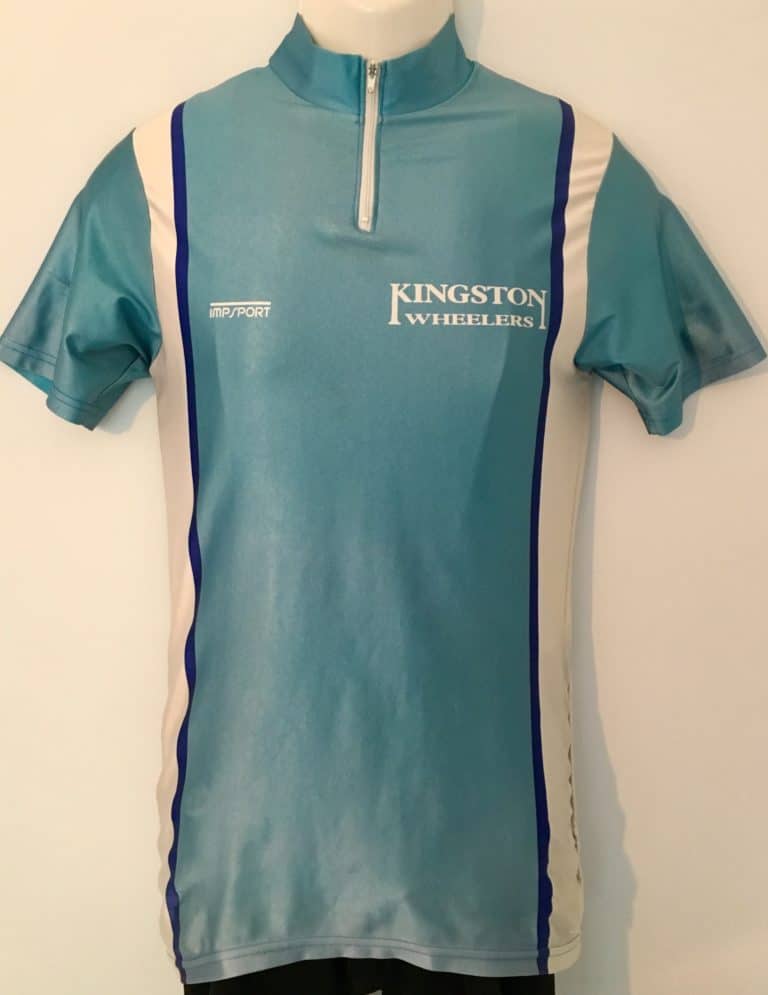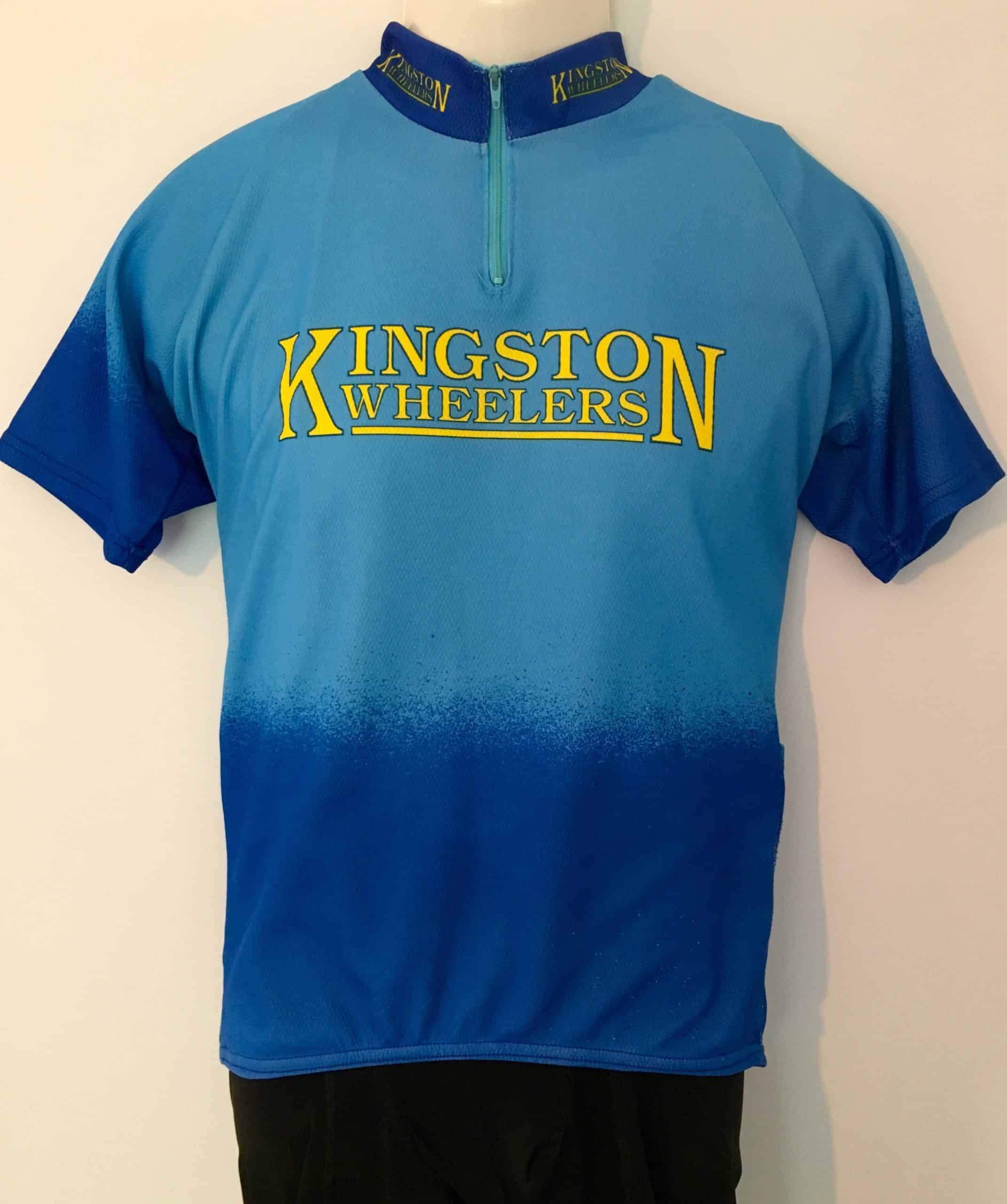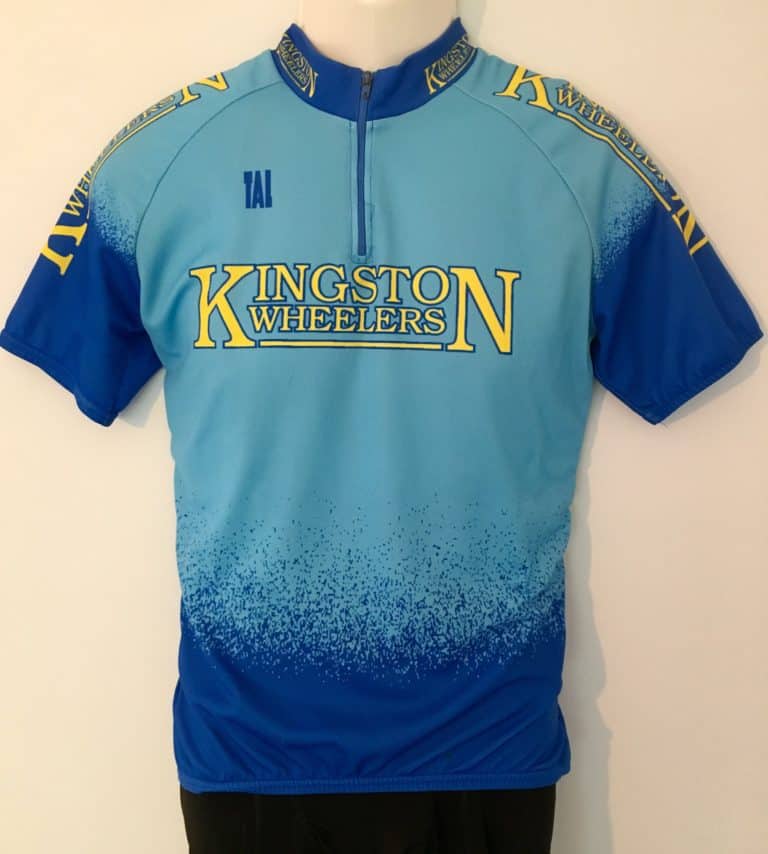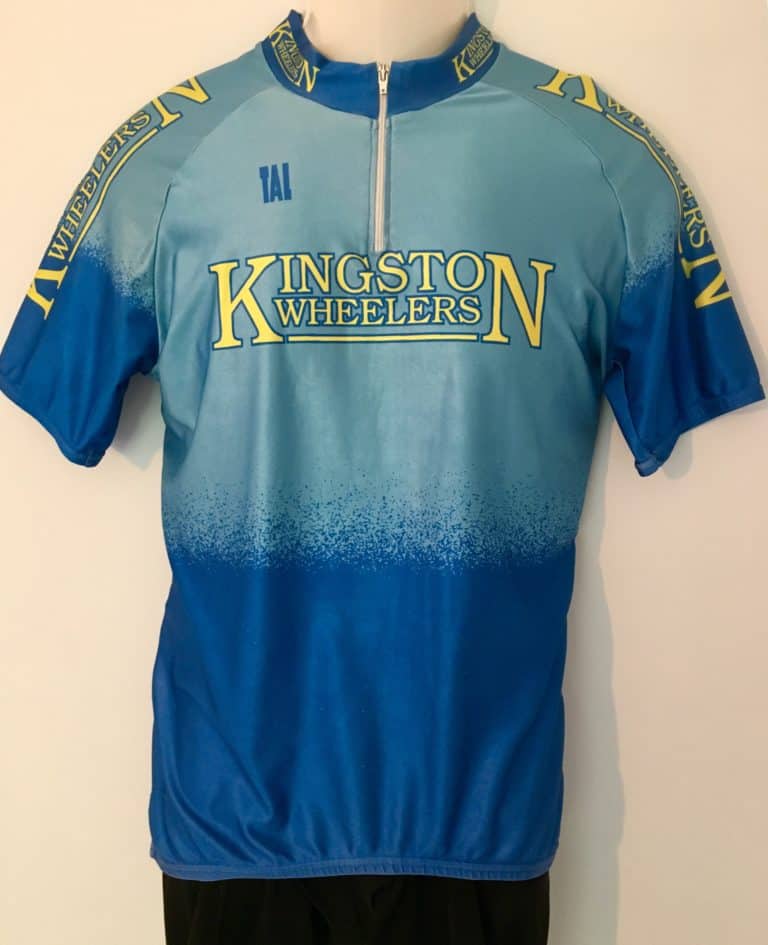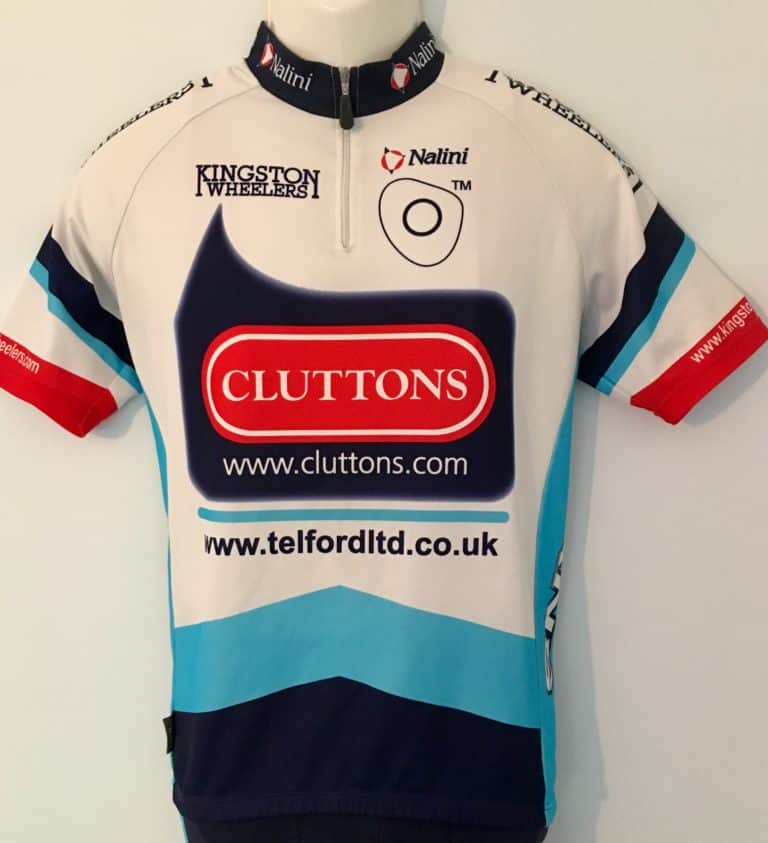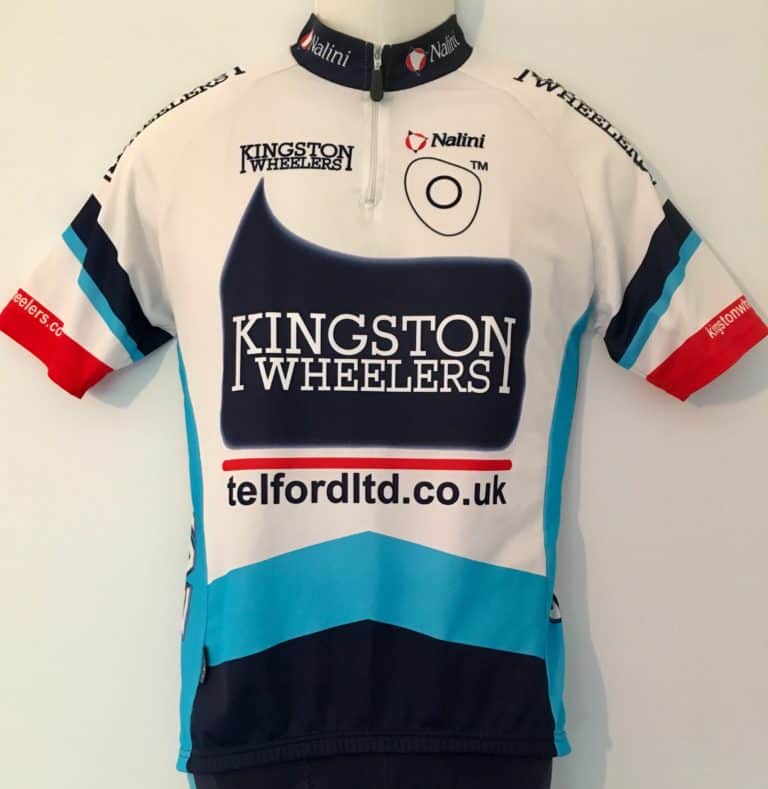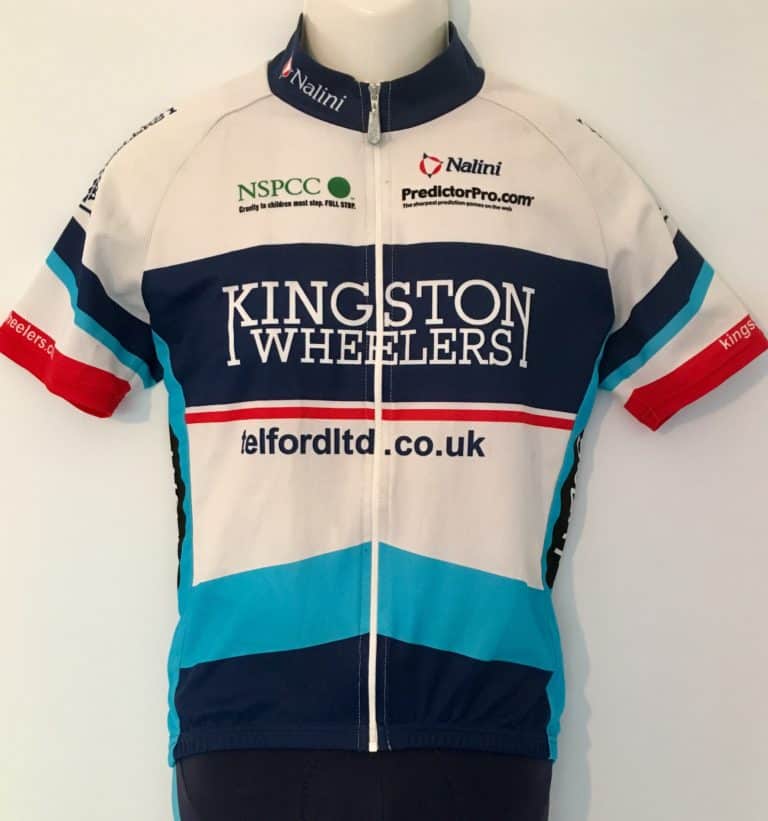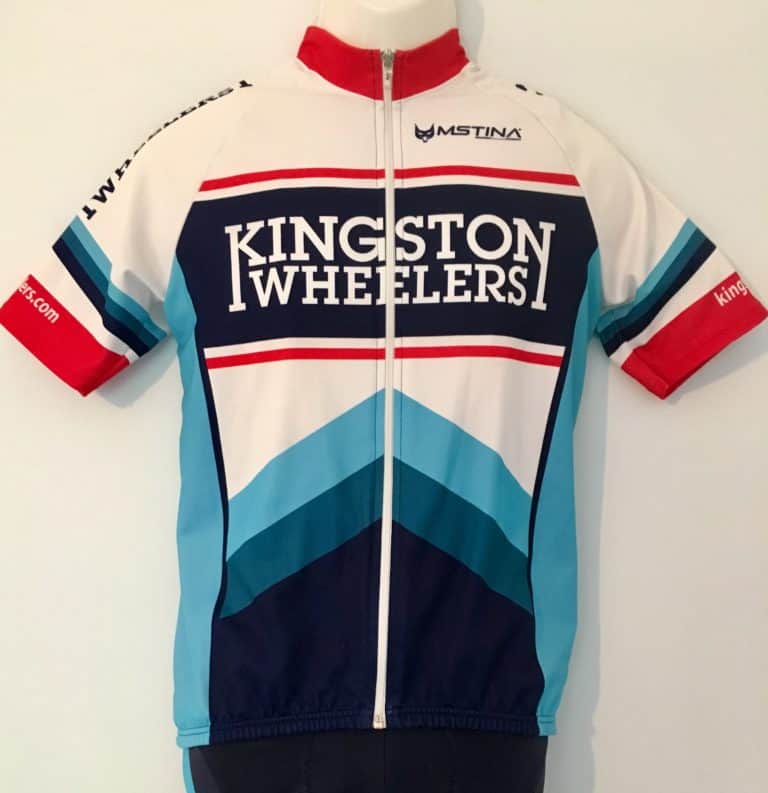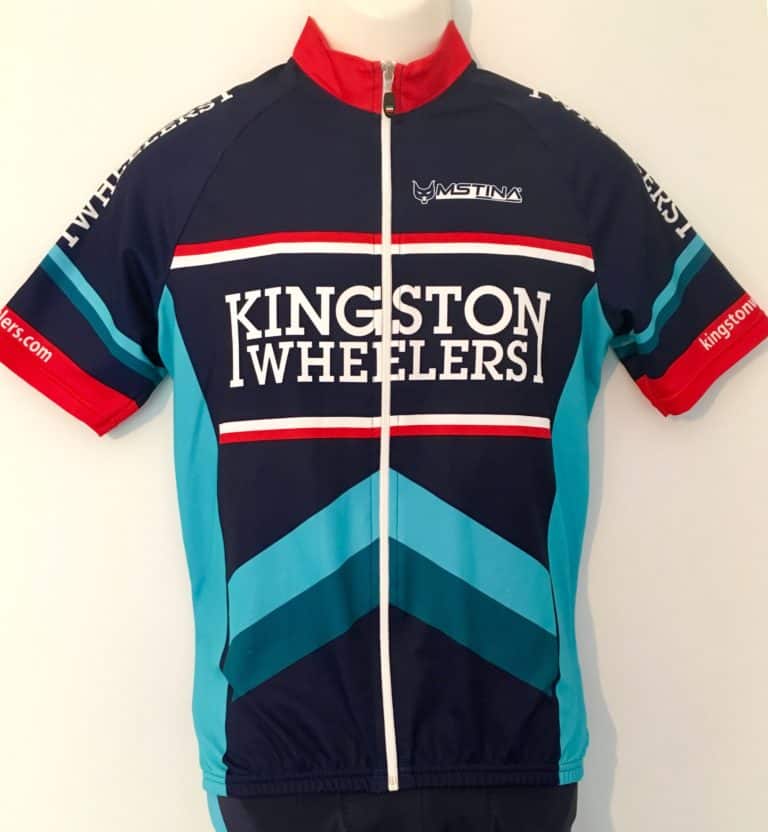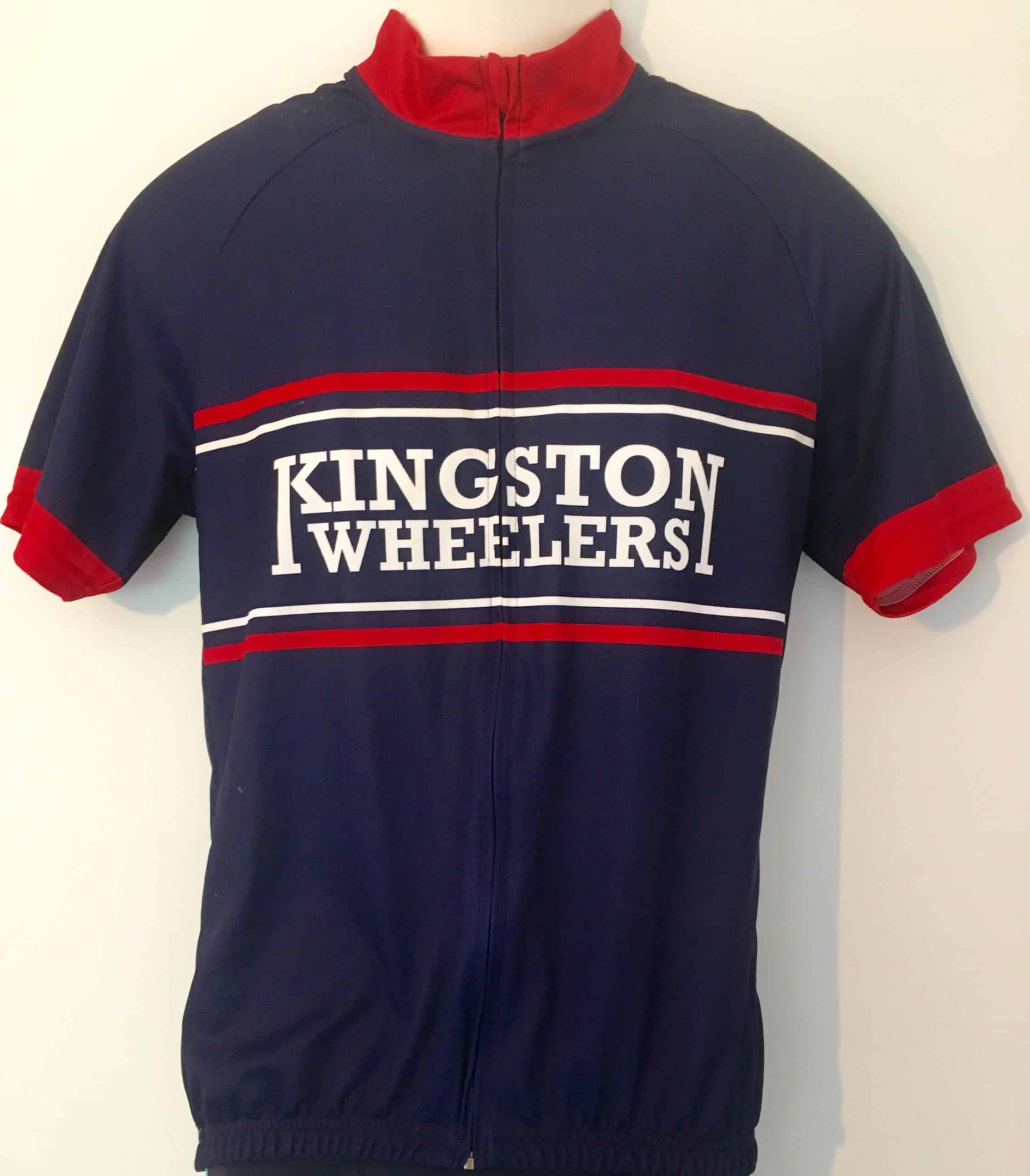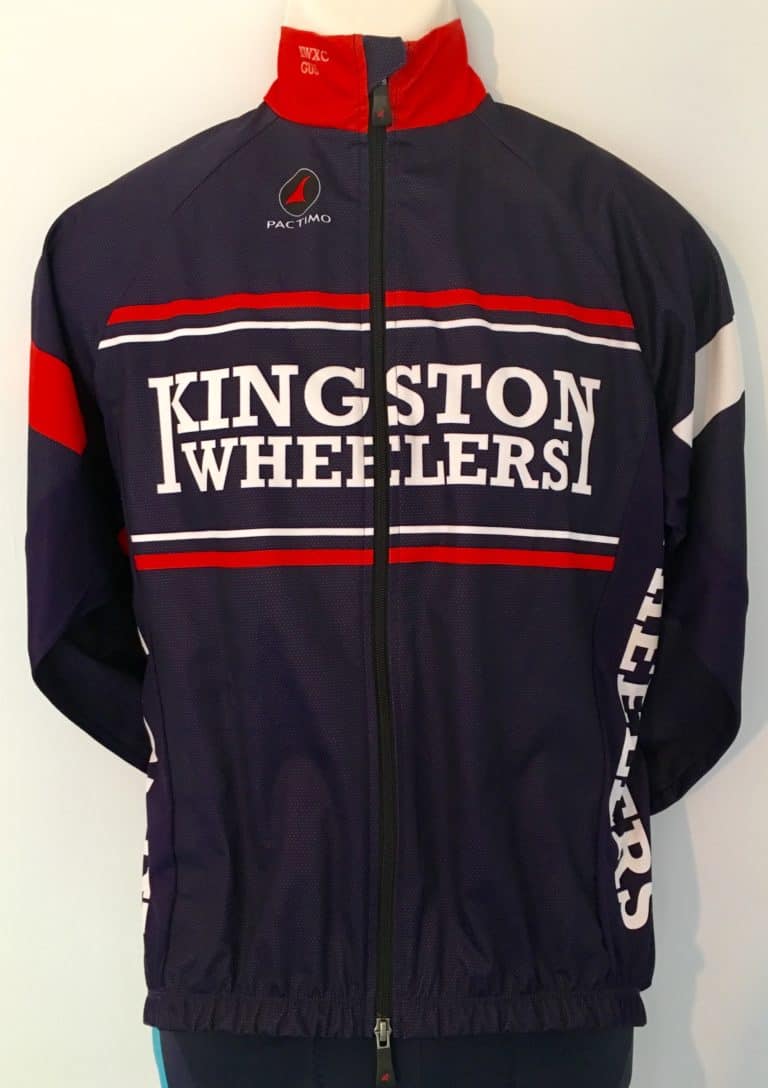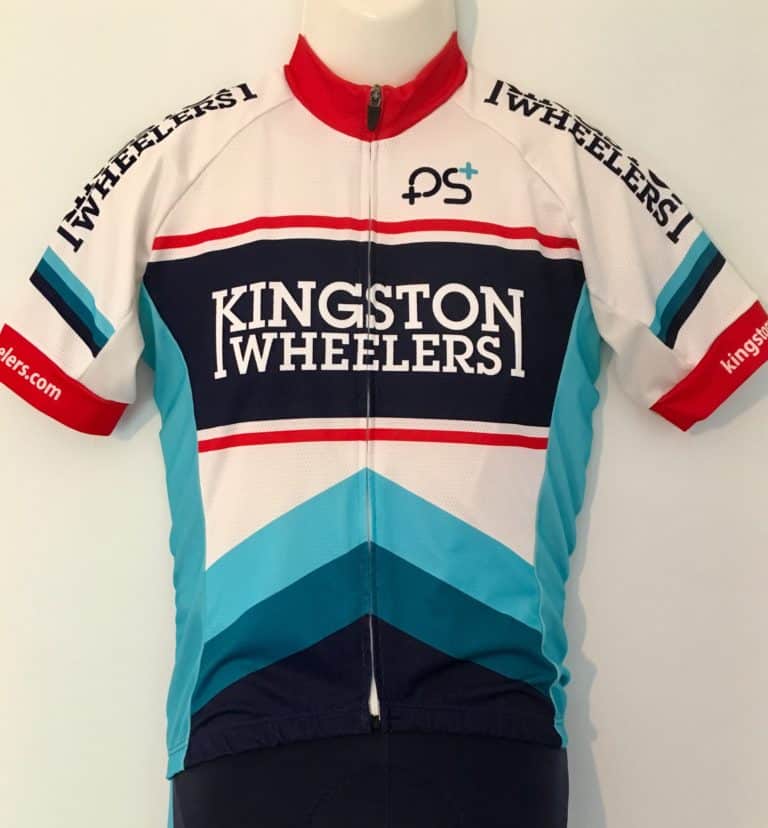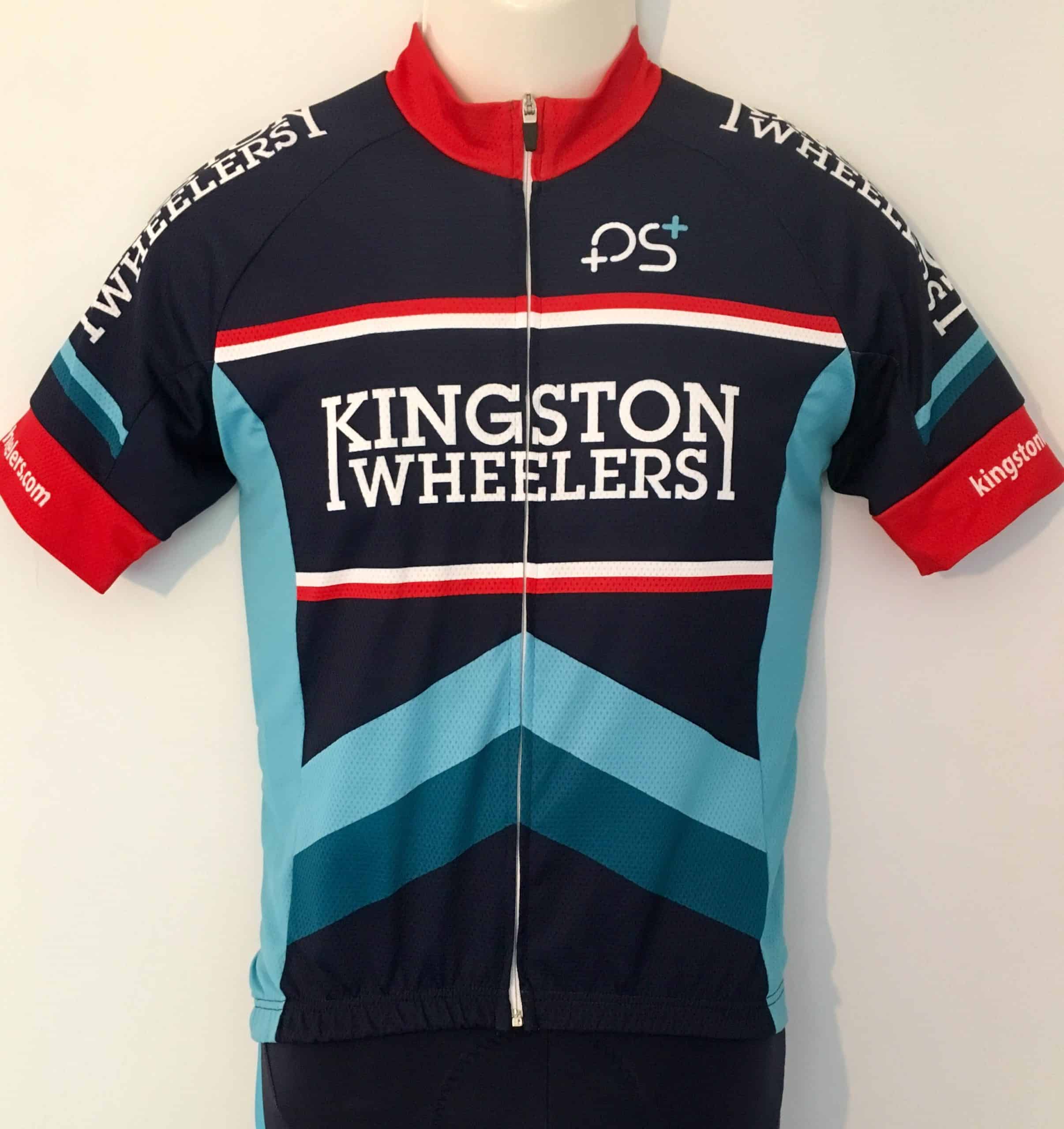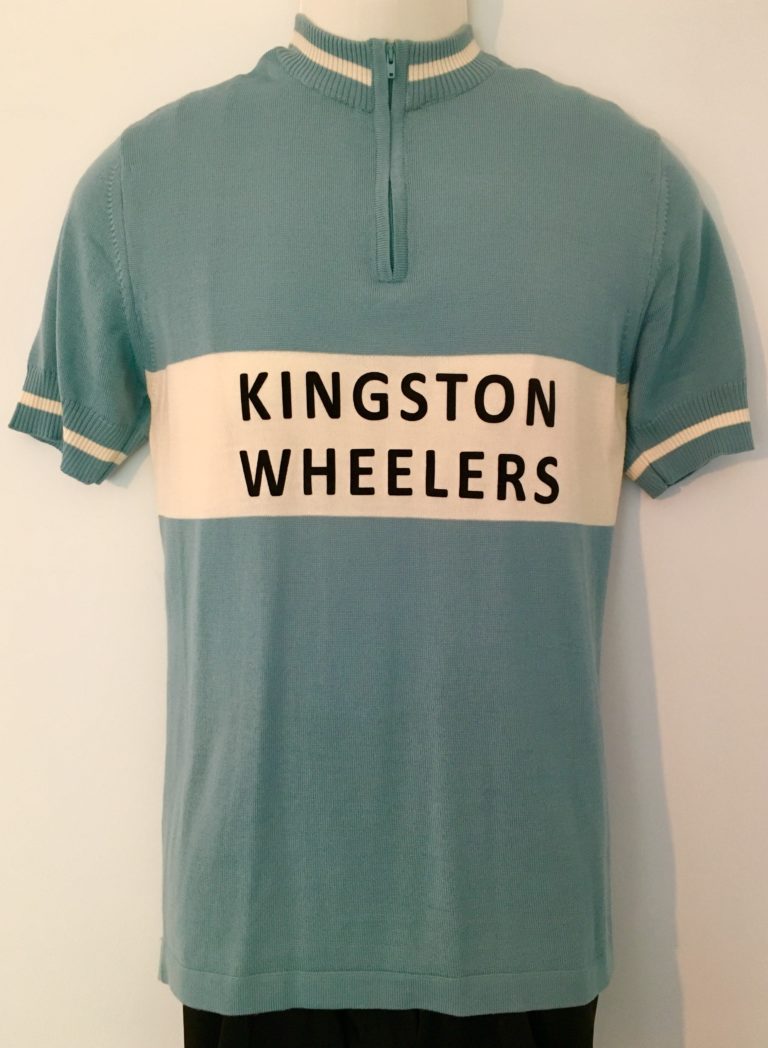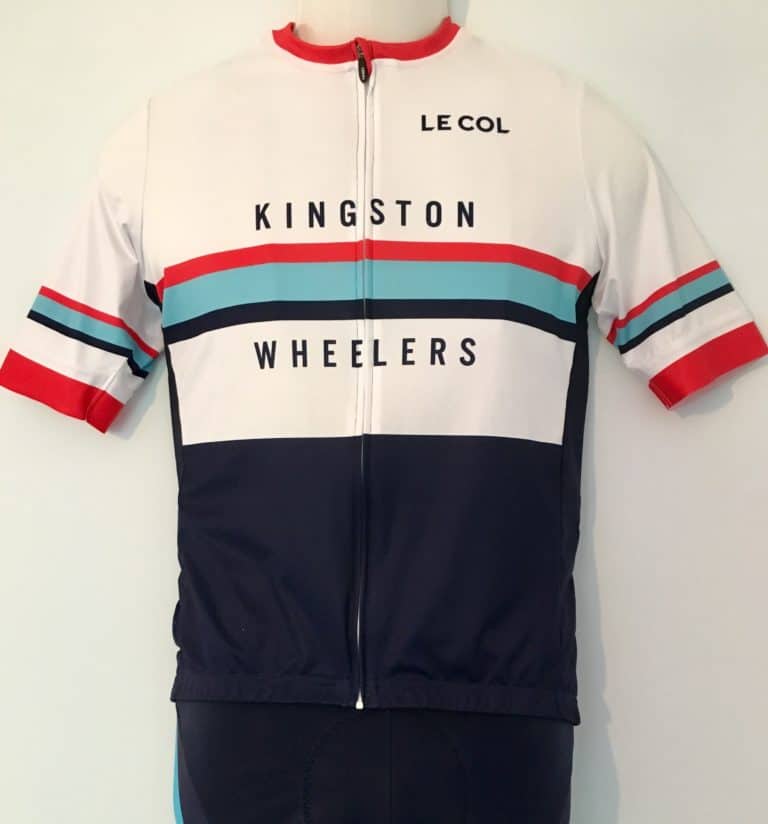History of KWCC Club Kit
The Kingston Wheelers cycling kit is a fundamental part of the club and something that helps shape our identity. In recent times, the availability of club kit is something we have come to expect, however, for most of its long history, the Wheelers has been a small club, quite different from the huge membership it boasts today. As a consequence, there have been periods where it wasn’t practical to evolve the jersey’s design, or even to have kit produced at all. Also, during our club’s formative years cycling kit did not exist.
Early Decades
When the club was formed in 1924, specific cycling kit was very much in its infancy and was the preserve of pro riders. Amateur/club kit essentially did not exist. Cyclists usually wore everyday clothing such as shirts, ties and blazers, or dresses. Knee-length socks would typically be pulled up over regular trousers, or keen cyclists would wear plus-fours, again with long socks.
In the warmer months our founder Bill Orpin, for example, would don velvet corduroy shorts (and in his case always with a pipe stuffed inside his sock!). The lack of anything resembling cycling clothing continued in the Wheelers, and other clubs, until well after WWII.

Original Club Kit – 1968
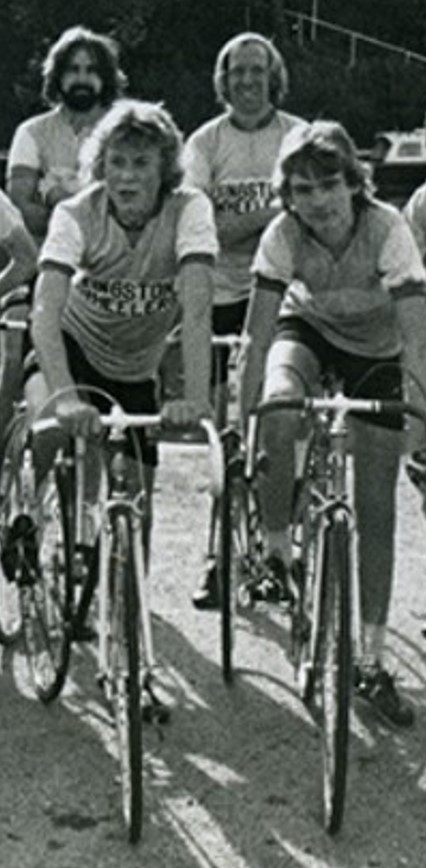
Original Club Kit – 1975
The First Wheelers Jersey
Cycling kit was first introduced into the Club in around 1960. Even during this period the kit was seen as clothing only required for those who raced. None of the older members at the time, even those who remained in the club into the 1990s, ever transitioned away from their everyday wear into the club kit.
Our first club kit consisted of short black shorts and a pale blue jersey with a wide white band across the chest, with white sleeves ending in a darker blue cuff. Early jersey versions had no text and no logos but a few years later there was the option for members to sew on a cotton KWCC badge on to the jersey. By the end of that decade individual letters, in black, spelling ‘Kingston Wheelers’ were available to purchase to iron on to the jersey across the white band.
Consistent with the period, our club kit was wool based which used to stretch significantly in heavy rain “jerseys down to the knees and shorts almost to our ankles” – but the kit reshaped when dry. Wool jerseys of the day, although heavy and not particularly comfortable, were sturdy, kept the rider warm, were relatively affordable, with superior sweat wicking properties compared to cotton.
Consistent with the period, our club kit was wool based which used to stretch significantly in heavy rain “jerseys down to the knees and shorts almost to our ankles” – but the kit reshaped when dry. Wool jerseys of the day, although heavy and not particularly comfortable, were sturdy, kept the rider warm, were relatively affordable, with superior sweat wicking properties compared to cotton.
The pale blue and white sections of the jersey were stitched together from separate cuts of material, while the woolen shorts included a hard chamois that required cream to be applied to soften before riding. For a time during the Sixties, in the days before cycling helmets, the club kit range included a black beret, which echoed the then fashion in cycling.
The kit design remained completely unchanged throughout the 1960s and ‘70s, though a tighter and lighter race version was made available before the Seventies, made of polyester. As the Club’s membership decreased during the end of this period, ordering of kit ceased. Therefore, for some time in the early to mid-1980s the very few new members who joined were told to simply turn up for Sunday club runs in whatever blue top they might own.
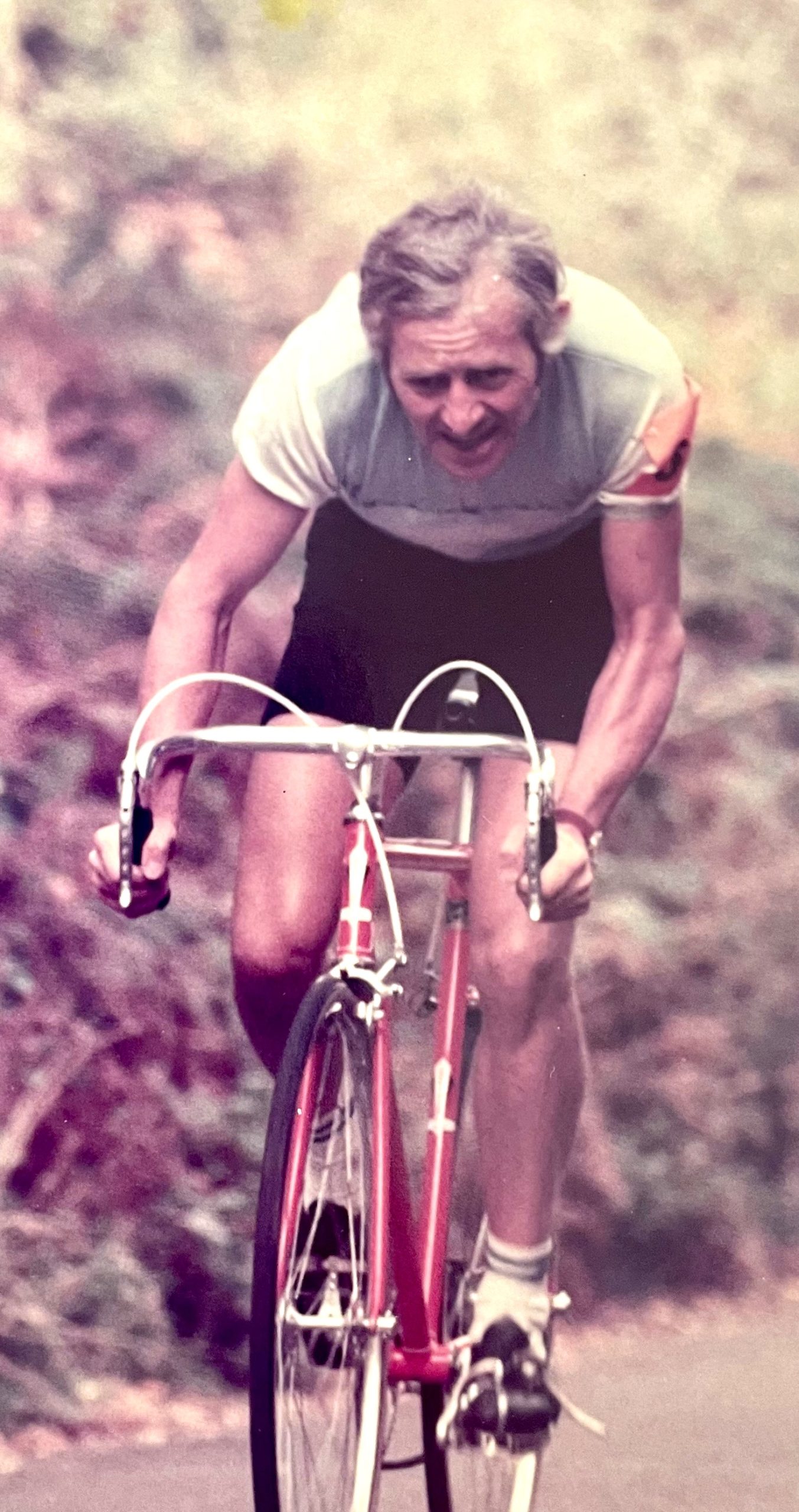
Club Kit – 1976
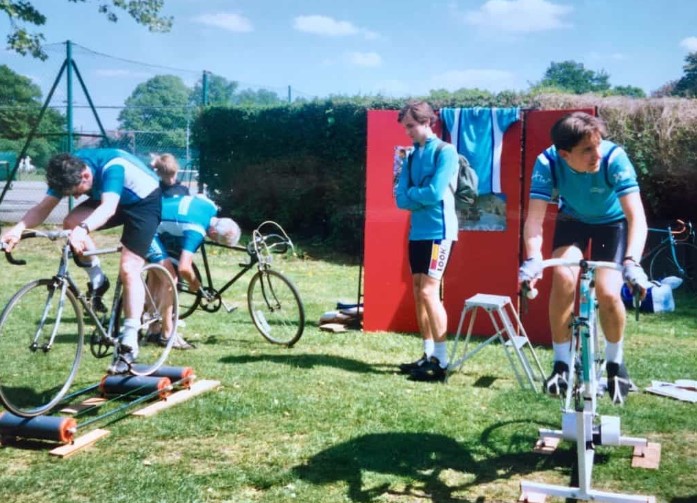
The 1985 design – the club hosting a ‘stand’ at the Kingston Festival of Sport, Canbury Gardens 1987
Kit Re-Design and Updates
Since 1985, club kit has again been a consistent and important part of Kingston Wheelers CC, starting with the launch of a new jersey design in Kingfisher Blue – manufactured by a company called Romar Sport. For the next almost 20 years the club kit slowly evolved and modernised, new manufacturers were tried, and for the first time our cycling shorts were not plain black. Although the new club kit’s design wasn’t re-worked for another 13 years, every 4-5 years we partnered with a new clothing company which brought some tweaks in materials, fit, zips and the number of rear pockets.
Another significant club kit change arrived as the late ‘80s: shorts were designed to match the jerseys. Previously shorts had always been plain black, sometimes, from the 1970s with the club name displayed in white iron-on lettering. This was not only due to the kit printing limitations of the time, but it was regulation to race in black shorts.
Ready for 1991 the club switched kit supplier, from GibbSport to ImpSort and a price list from this time shows an incredible array of items available. Despite no female specific items, there were still 54 club kit items for sale from many variants of cycling clothing to wheel bags, saddle covers, polo shirts, ski hat, duffle bag and helmet cover. The cost of the cheapest short sleeve jersey was £30.50 and bibtights ranged from £36.50 – £40.50.
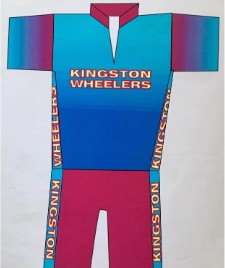
Shortlisted jersey redesign – 1997
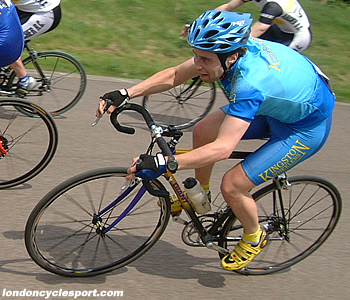
The 2002 Kit Design, being raced at Hillingdon
For almost four decades blue and white had been the only colours on our jersey (aside from text) and our kit was produced against just two designs. However, 1998 saw the introduction of yellow in what was a very contentious & divisive design – judge for yourself in the gallery below! A number of design proposals were put forward in late 1997, and as you will see from this image of one of the contenders, the KWCC kit at the time could have been even more radical. A revision to the ’98 design, produced by TAL in 2002, where ‘Kingston Wheelers’ printed across the shoulders made its debut, making the club name more visible during races. The shoulder/sleeve lettering remained a constant until the Le Col jersey re-design available from 2019.
Across this period the jersey fabrics transitioned from wool, to nylon, to acrylic, to polyester.
Kit Modernisation and the Introduction of Red
Since the end of the last century the KWCC kit design has changed much more rapidly, and as the club’s membership started to swell from 2004, under new stewardship, so did the desire for great kit.
The yellow logo’d kit was relatively short-lived, as 2004 brought about another complete re-design and introduced a new colour, red, to the club’s clothing. A little more recently the colour teal was added but has since disappeared.
2003/04 witnessed a period of significant change in the club, in addition to completely new kit made by a more professional clothing provider, the club attained sponsorship for the first time – initially with Evans Cycles, Telford and OTM blazon across our jerseys under headline sponsors Cluttons.
The red accent on our kit, which continues 20 years on, was not added by design but emerged from Cluttons’ red logo which helped make the jersey stand out. The sponsorship allowed members to purchase KWCC kit at a reduced price.
An Appetite for even more Jerseys
In addition to the official club kit, registered with British Cycling, club members have, on occasion, designed extra jerseys, usually for a sub-section of the club. Some have not contained the club name, but it’s worth mentioning the four versions that have.
In 2016, our first club design was referenced when an unofficial retro club jersey was produced, in merino wool, largely for members with a keen interest in classic steel bikes. Prior to that, two other unofficial club jerseys were designed by and for sub-groups of the Wheelers, namely for our mountain bike and cyclo-cross riders, in 2013 and 2014 respectively.
Most recently a special centenary jersey has been created, taking the white chest band of the 1960 design and the Kingfisher blue from the 1980s version – unlike the 2016 creation it is produced in the latest fabrics. It is also the first jersey to carry the club’s original coronation stone logo.
As can be seen by the collection of jersey photos, the KWCC kit is a regularly evolving design; with changes ranging from the subtle tweaks, often in the materials used, that result from our quite frequent switching of clothing manufacturers; and kit refreshes comprising of a few evolutionary modifications; to full back-to-the-drawing-board re-designs of ’85, ’98, ’04 and ‘19. One aspect of the kit that has remained a constant throughout the club’s history is that it has been designed by members for our members.
Gallery of KWCC Club Kit


